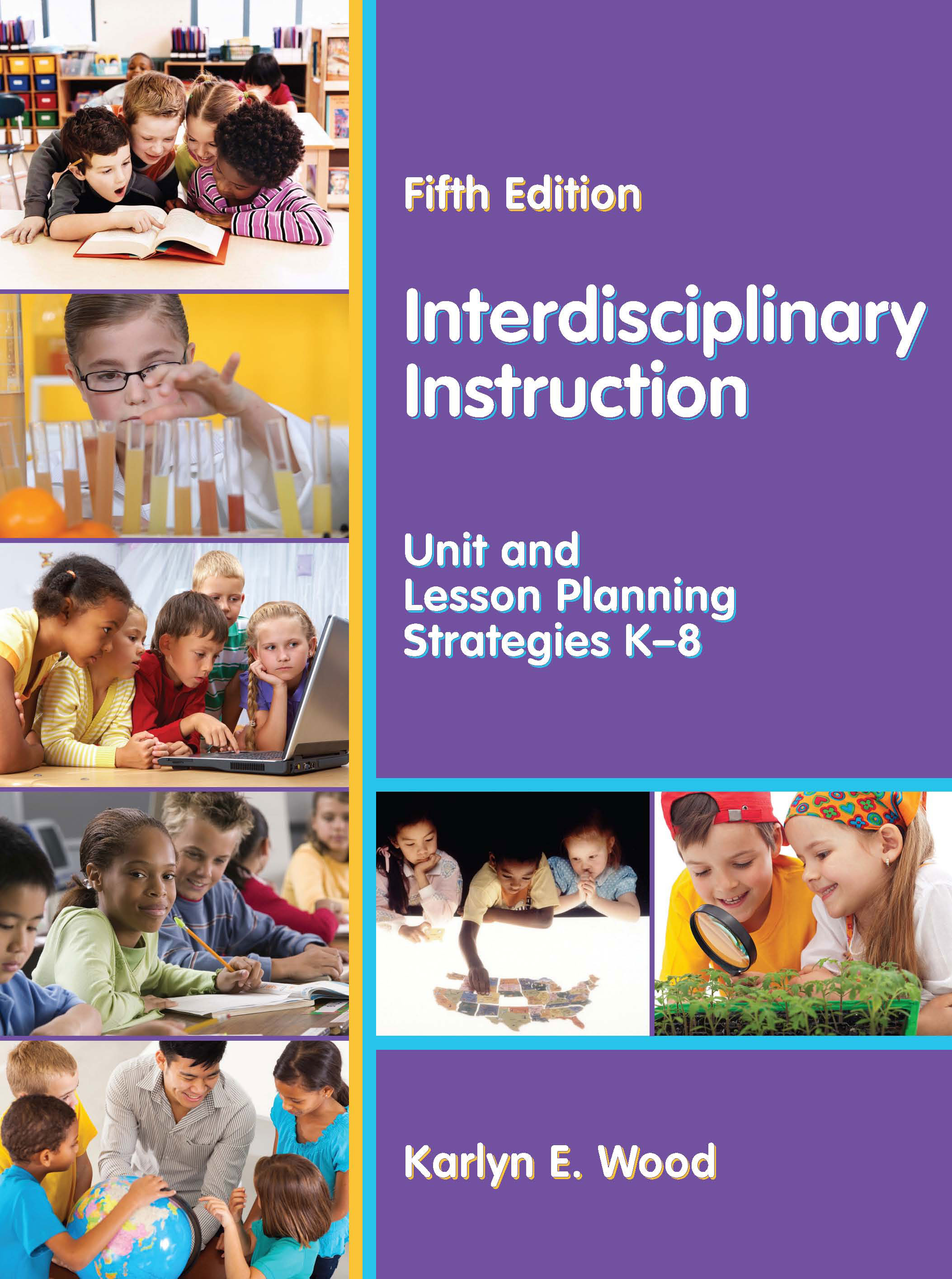“This book is useful for my reading and writing course where students create a thematic mini-unit—one week’s lesson planning. I particularly like how thematic units are introduced to pre-service teachers since these can be an overwhelming task.” — Edwin Ubeda, St. Ambrose University
“A major strength of Wood’s work lies in the balance between theory, practice, and a consideration of obstacles that stand in the way of effective instruction.” — Impact
“A comprehensive overview of the kind of thinking and planning educators need to engage in if they want to take on the rewarding challenge of collaborating with their peers to create interdisciplinary units of instruction at the elementary and middle school levels.” — Rick Heckendorn, Manhattanville College
“Easy to implement thanks to the practical examples. Wood provides the theoretical background, current trends, and practical application of interdisciplinary instruction for both the novice and experienced teacher.” — Michelle Anderson, Felican College
“This book seems like an excellent resource for my courses. Its strength is that it is user-friendly and concise. I also like the practical examples in authentic teaching environments. It helps teachers better connect theory to practice.” — Ruth Busby, Troy University

196 pages, $36.95 list
1-4786-2712-3
978-1-4786-2712-8
© 2015
paperback
eBook availability
Interdisciplinary Instruction
Unit and Lesson Planning Strategies K-8
Fifth Edition
The fifth edition of this practical guide to interdisciplinary instruction focuses on the thinking and reasoning skills mandated by the Common Core State Standards and the content-learning standards required by an increasing number of states. The author provides an easy-to-follow, step-by-step guide to designing, creating, and implementing unit and lesson plans for all learners. Both pre-service and in-service elementary and middle-school teachers will find Wood’s approach to be comprehensive, with a strong theoretical foundation.
Using Wiggins and McTighe’s backward design process, Wood offers specific protocols for creating unit and lesson plans at the elementary and middle-school levels. By emphasizing differential instruction, constructivist educational philosophy, application of skills in meaningful context, and the art of engaging student interest, he demonstrates how diverse student populations can benefit from the interdisciplinary approach. Prospective teachers will learn to create interdisciplinary and multidisciplinary plans that promote problem solving, creativity, and social interaction. Examples abound, with an appendix of sample unit plan designs filled with ideas for lessons and activities.
Using Wiggins and McTighe’s backward design process, Wood offers specific protocols for creating unit and lesson plans at the elementary and middle-school levels. By emphasizing differential instruction, constructivist educational philosophy, application of skills in meaningful context, and the art of engaging student interest, he demonstrates how diverse student populations can benefit from the interdisciplinary approach. Prospective teachers will learn to create interdisciplinary and multidisciplinary plans that promote problem solving, creativity, and social interaction. Examples abound, with an appendix of sample unit plan designs filled with ideas for lessons and activities.
Reactions
1. Introduction to Interdisciplinary Instruction
Distinguishing Features / Comparing Interdisciplinary, Multidisciplinary, and Integrated Approaches / Interdisciplinary and Multidisciplinary Studies: Organization and Design / The Rationale for Using an Interdisciplinary Approach / Summary
2. Challenges of the Interdisciplinary Approach
Requirements of Teachers / Challenges to the Development of Interdisciplinary Programs / Summary
3. Designing Interdisciplinary Units
Important Considerations When Planning an Interdisciplinary Unit / The Context for Learning: What Are Its Components? / Interdisciplinary Unit Plan Outline and Design / Summary / Two Examples of an Interdisciplinary Unit Plan
4. Designing a Multidisciplinary Unit
How Does Multidisciplinary Instruction Differ from the Interdisciplinary Approach? / Why Is the Multidisciplinary Approach Appropriate for Older Elementary and Middle School Students? / Planning and Designing a Multidisciplinary Unit
5. Lesson Planning Strategies and Protocols
Learning, Development, and Lesson Planning: What Needs to Be Considered? / Bloom's Taxonomy: How Can It Assist the Lesson-Planning Process? / Lesson-Plan Formats: What Are the Essential Components of a Lesson Plan? / The Lesson Procedure / Protocols for Planning Some Lesson Procedures / Two Lesson Plans Following a Guided Listening Protocol / Two Sample Lesson Plans Following a Know, What to Know, Learned (K-W-L) Protocol / Two Sample Lesson Plans Following the Five-Step Protocol / Summary
6. Assessment Planning: Authentic and Traditional Strategies
Assessment and Instruction / Using Authentic Assessment Techniques / Examinations / Summary
Appendix: Sample Interdisciplinary Unit Plan Web Designs
Distinguishing Features / Comparing Interdisciplinary, Multidisciplinary, and Integrated Approaches / Interdisciplinary and Multidisciplinary Studies: Organization and Design / The Rationale for Using an Interdisciplinary Approach / Summary
2. Challenges of the Interdisciplinary Approach
Requirements of Teachers / Challenges to the Development of Interdisciplinary Programs / Summary
3. Designing Interdisciplinary Units
Important Considerations When Planning an Interdisciplinary Unit / The Context for Learning: What Are Its Components? / Interdisciplinary Unit Plan Outline and Design / Summary / Two Examples of an Interdisciplinary Unit Plan
4. Designing a Multidisciplinary Unit
How Does Multidisciplinary Instruction Differ from the Interdisciplinary Approach? / Why Is the Multidisciplinary Approach Appropriate for Older Elementary and Middle School Students? / Planning and Designing a Multidisciplinary Unit
5. Lesson Planning Strategies and Protocols
Learning, Development, and Lesson Planning: What Needs to Be Considered? / Bloom's Taxonomy: How Can It Assist the Lesson-Planning Process? / Lesson-Plan Formats: What Are the Essential Components of a Lesson Plan? / The Lesson Procedure / Protocols for Planning Some Lesson Procedures / Two Lesson Plans Following a Guided Listening Protocol / Two Sample Lesson Plans Following a Know, What to Know, Learned (K-W-L) Protocol / Two Sample Lesson Plans Following the Five-Step Protocol / Summary
6. Assessment Planning: Authentic and Traditional Strategies
Assessment and Instruction / Using Authentic Assessment Techniques / Examinations / Summary
Appendix: Sample Interdisciplinary Unit Plan Web Designs